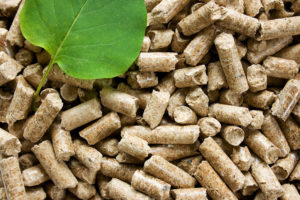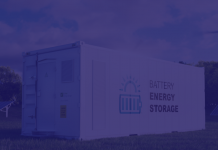 Firms operating combined heat and power plants could be paid to keep their power off the local grids at times of network stress, in much the same way as wind farms are paid ‘constraint payments’ by National Grid. Some of the biggest names in engineering are collaborating to figure out how that might work, with a project that kicked off in the last few weeks.
Firms operating combined heat and power plants could be paid to keep their power off the local grids at times of network stress, in much the same way as wind farms are paid ‘constraint payments’ by National Grid. Some of the biggest names in engineering are collaborating to figure out how that might work, with a project that kicked off in the last few weeks.
Adding distributed generation to networks that were designed around centralised power generation causes problems for the distribution network operators. It means the distribution network operators (DNOs) have to increase the resources needed to manage and reinforce the system.
Ultimately, the consumer picks up the tab.
Because the DNOs are regulated in a manner designed to allow a reasonable return at the lowest cost to bill payers, it is hard for them to throw money at the problem. So the regulator has created a programme where the DNOs in consortia with technology firms can bid for money to experiment with technologies that help solve these problems at a lower cost. As part of the deal, they have to share the learnings with all other local grid operators.
The consortium aims to work out the most intelligent response to managing fault current using software and automated systems. The plan is to demonstrate that fault current can be managed at lower cost by using existing assets, such as CHP, allied with new commercial techniques.
If it works, it means the grid operators have to spend less upgrading their networks, which means lower bills for the UK.
ENER-G is piloting part of that software solution with customers in the North West. The so-called Fault Current Limiting service (FCL service) automatically boots CHP exports off the system if fault levels get too high, with the DNO paying the generators for coming off the system in return.
ENER-G is assessing which technologies work best, and said the techniques could also be adapted to other forms of distributed generation such as wind and solar PV. The firm is also working with the Association for Decentralised Energy (formerly the CHP Association) and research firm Impact Research to gauge interest from member generators in signing up for constraint payments.
Kicking off the project earlier this month Steve Johnson, CEO of Electricity North West, said: “The ‘Respond’ trial will allow us to explore new technical and commercial solutions to get more from our existing network. This will ensure customers continue to get the power they need and give them the flexibility to connect renewable energy sources such as combined heat and power plants, without us having to invest in new expensive infrastructure. And by using these innovative techniques to intelligently manage fault current, customers could see lower bills.”
Chris Marsland, technical director for ENER-G Combined Power, said: “We’re proud to play a part in this groundbreaking trial, which could provide future low carbon power more competitively. It could increase further the financial returns of CHP by providing commercial and industrial users with an income stream from playing their part in reinforcing the network. ‘Respond’ has the power to accelerate the roll out of distributed generation from CHP and other low carbon and renewable sources.”
Association for Decentralised Energy director Tim Rotheray said: “As the need for greater local network management grows, we see this as a new revenue opportunity for CHPA members to help ease local network issues. We look forward to working with our partners and all of our members to see how their existing CHP assets can provide local network management services at lower cost to alternative options.”
Find out more about the project here.
Click here to see if you qualify for a free subscription to the print magazine, or to renew.
Follow us at @EnergystMedia. For regular bulletins, sign up for the free newsletter.




I am assuming that by “CHP” is meant the renewable thermal generation.
It would be cheaper to pay the fossil fuel generators to go offline, as it’s done in Germany, as they are the inflexible ones. Either way, it’s a loss to the taxpayer, as the grid gets a taxable benefit.
Time to look again at “Run-of-river” micro hydropower. Lots of small installations along the 22,000 km of non-navigable rivers and 2,200 km of navigable rivers. Predictable, constant, totally green, every town has a river… it couldn’t hurt.
UK rivers not necessarily known for their rapid flows.
This is local grids, at distribution level not transmission.
Such a network protection already exists in Germany. Network operators have capability of throttling back or stopping the exporting generators altogether when required. MTU Onsite Energy has this control feature integrated known as “Active grid feed-in control”.
As a business Energy customer; I’d welcome anything that limits the exponential growth of pass through charges on our energy bills, as they are becoming a serious risk factor to the continued success of our business. Previously commodity accounted for 60% of the utility invoice, now its 40% with 60% as other charges through the changes to the Capacity Market and subsidising investors.